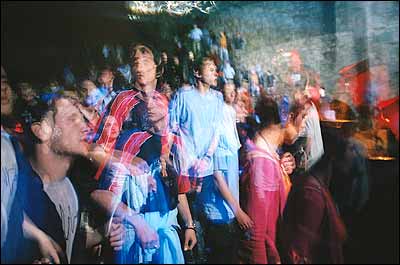
Though it’s taken the last half-decade to shake off the darkness of war and its sanctions, Belgrade is once again poised to lure visitors with its vibrant contrasts. The city’s imposing natural beauty—verdant hills rising above the Sava and Danube rivers—rests uneasily alongside decaying socialist architecture and government buildings precision-bombed by NATO forces. By day you can sip coffee while watching elderly ladies going to light candles in Eastern Orthodox chapels thick with incense smoke, or witness samizdat and Surrealism colliding in art galleries. But after dark, the city rattles and jives to an all-hours bar scene that takes hold in nightclub boats along the river and on Strahinjica Bana street, where patrons spill out onto the sidewalks. Spring is the perfect time for a long weekend in a city where sunlight dazzles historic parks and monasteries and dawn hurries visitors home after long nights of downtempo, dub, and house chased back with cheap Montenegrin beer.
1 Getting to Belgrade requires a connection in Western Europe. A recent check of Thursday-to-Sunday flights from JFK found round-trip fares as low as $672, with connections through London, Vienna, or Munich via Austrian Airlines, Lufthansa, and Serbia’s national airline, JAT.
2 Skip the inconveniently located Hyatt and Intercontinental and check in to Le Petit Piaf, a new hotel only twenty steps from Belgrade’s famous Skadarlija restaurant-bar district. The Piaf’s ultramodern rooms are a sleek yet comfortable alternative to the sparse and vaguely seedy chambers of most Balkan hotels (011-381-11-303-5252; from $180).
3 Spend an afternoon exploring the nooks and crannies of the ancient fortress of Kalemegdan. Though the main attraction is the breathtaking view of the Danube and Sava rivers meeting below your feet, Kalemegdan also offers an art gallery, a military museum, and outdoor cafés.
4 Off-the-beaten-path arts centers, including REX and the Center for Cultural Decontamination, favor multimedia mash-ups of politics and punk. (A recent exhibit at the latter by Slovenian artist Tamara Cetkovic juxtaposed communist Yugoslavia’s red star with contemporary landscapes.)
5 Rock and dance music is Serbia’s best export at the moment. In the bad old days, street kiosks sold bootlegs for $2, but the cops have shut those down. You’ll have better luck finding that Modern Quartet or Eyesburn CD at stores like IPS and Beopolis.
6 At Kuca Cveca, the grave of Marshal Tito (ruler of Yugoslavia from 1945 to 1980) gives you a heady whiff of communist kitsch. The glassy modernist mausoleum on a hill was built to accommodate a perpetually heavy crush of visitors. Twenty-five years later, you’ll likely find yourself alone with a key figure in the Cold War.
7 A few hours before dinner, head for Knez Mihailova street, a lively pedestrian zone with shops and open-air cafés. It’s the place to be as darkness falls, when you can buy a cheap bag of salty popcorn from a street vendor and indulge in the Balkan custom of korzo, or strolling and gawking at others.
8 Serbia’s meaty cuisine is central to its restaurant scene. Belgraders take special guests to Daco, a rustic restaurant where you can stuff yourself with grilled lamb and beef dishes washed down with beer and plum brandy. Visitors craving respite from smoky meat will find excellent salads, pizzas, and pastas at Kapric.
9 Those nostalgic for New York’s pre-Bloomberg rock scene should check out Akademija, Southeast Europe’s most famous rock club—dank, cigarette-choked, and super-loud. Shows tend to start after 10 P.M. and cost about $5.
10 It’s 2 A.M. and your flight is in four hours? Bassment spins funk and “nu jazz” ’til the wee hours, Andergraund favors disco-inflected house in a cavernous space near Kalemegdan, or you can hear some of Belgrade’s hottest D.J.’s at Pazi Skola—and catch up on your sleep later during the ten-hour flight.